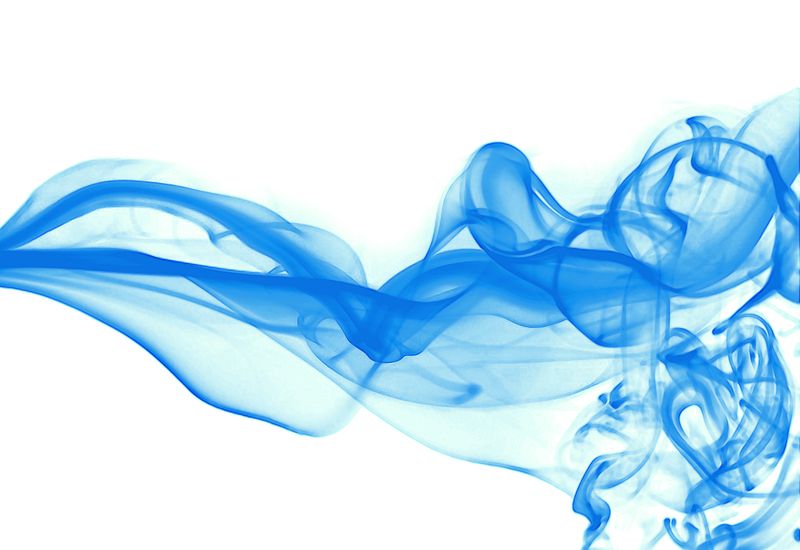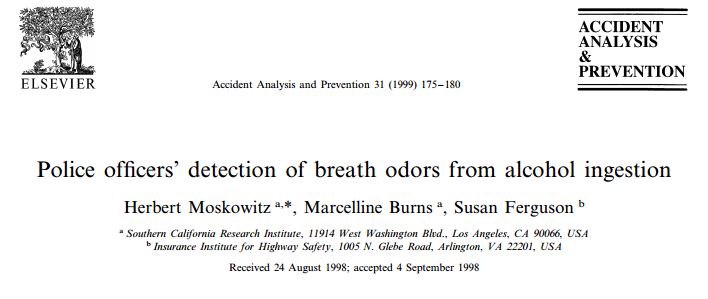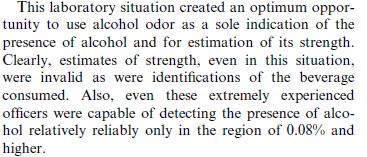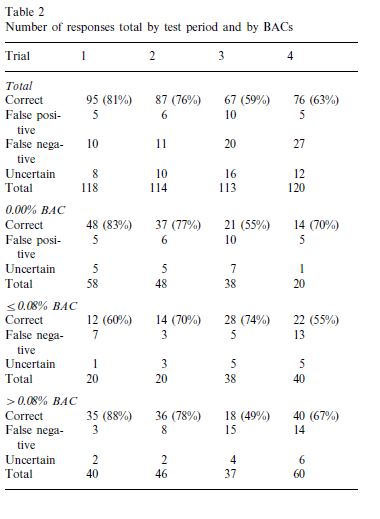
Impaired Driving Testimony. Manifestations of Alcohol Consumption and Proof. What is the Most Often Cited DWI Evidence?
Alcohol breath odor is the most frequently cited observation by US police officers in alcohol related traffic offenses – Southern California Research Institute
- Strength of Odor
- Slight, Moderate, or Strong
- Probability of Detecting Alcohol Low and Variable
- UNTIL High Breath Alcohol Concentrations

See More: Detection of Odor of Alcohol
Studies of Opinions Regarding the Odor of Alcohol
- Epidemiological studies report many false negative errors
- Subjects hidden behind screens
- Prevent all cues EXCEPT for odor
- Under optimum laboratory conditions
- After food consumption, correct detections declined
See More: Experimental Behavioral Studies of Impaired Driving

Is Odor Strength Related to Blood Alcohol Concentration (BAC)?
- Odor Strength Estimates Unrelated to BAC Levels
- Estimates as to BAC Inaccurate
- “Random Guesses”
These results demonstrate that even under optimum laboratory conditions, breath odor detection is unreliable – Southern California Research Institute

References
- Cahalan, D., Cisin, R.H., Crossley, H.M., 1969. American Drinking Practices, Monographs of the Rutgers Center of Alcohol Studies, No. 6. Journal of Studies on Alcohol, College and University Press.
- Compton, R.P., 1985. Pilot Test of Selected DWI Detection Procedures for Use at Sobriety Checkpoints. Technical Report HS806 724, Office of Driver and Pedestrian Research, National Highway Traffic Safety Administration, US Department of Transportation.
- Widmark, E.M.P., 1932. The Theoretical Foundations and the Practical Application of Forensic-Medical Alcohol Determination. Urban and Schwartzenberg, Berlin (English translation published as Principles and Applications of Medicolegal Alcohol Determination. Biomedical Publications, Davis, California, 1981)
 Carolina Criminal Defense & DUI Lawyer Updates
Carolina Criminal Defense & DUI Lawyer Updates